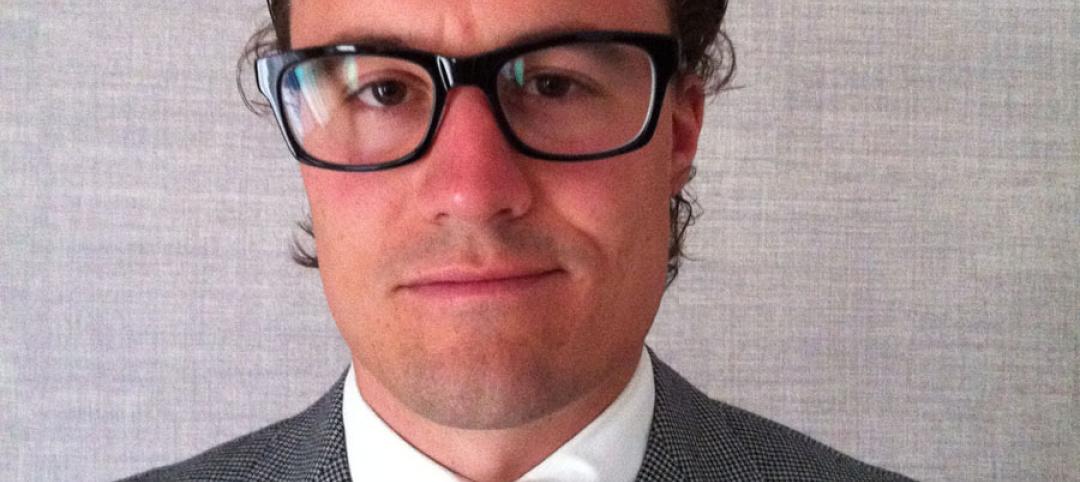Low-emissivity (low-e) glasses are critical to making today’s buildings brighter, more energy-efficient and more sustainable. By controlling solar heat gain and promoting daylighting, they help buildings use less energy for temperature control and lighting, while adding the human benefits associated with outdoor views and more pleasant working and living environments.
Here are five tips to help architects, engineers, and contractors understand and explain the differences among low-e glasses and their impact on building performance:
1. E = Emissivity. Emissivity refers to the relative ability of a material’s surface to radiate energy. Low-e glass has a microscopically thin coating that lowers the emissivity of the glass surface and is engineered to transmit energy from the visible light portion of the solar spectrum (between 380 and 780 nanometers), while reflecting energy from ultraviolet light (310 to 380 nanometers), which causes fading, and infrared light (above 780 nanometers), which makes buildings warmer.
2. Think of a thermos. A thermos works by using a silver lining to continuously reflect and maintain the temperature of the drink it contains. Low-e glasses function according to the same principal, using multiple layers of silver or other low-emissivity materials in the coating to keep heat inside a building or prevent it from entering. Similarly, thermoses and insulating glass units (IGUs) are both designed with air spaces that provide a layer of insulation between the inside and outside.
3. More slivers of silver. Low-e coatings incorporate multiple layers of silver (or other low- emissivity materials) to control the transmission and reflection of heat and light. Recent technical advances now enable glass manufacturers to deposit up to three layers of silver on the glass substrate, which has enhanced the solar control capability of low-e glasses without diminishing their ability to transmit light.
4. Passive for insulation. Passive low-e glasses are usually made using the pyrolitic process, which means the coating is applied while the molten glass ribbon is still on the float line. This produces a “hard” coat that is fused to the glass surface and highly durable, but which has a higher emissivity that a solar-control low-e glass. Passive low-e glasses have decent insulating capabilities, but because of the limitations of metal deposition on the float line, they permit more solar infrared energy (heat) to pass through their coatings and become trapped inside the building. Consequently, passive low-e glasses are often the best choice for cold, heating-dominated climates.
5. Solar control to reduce heat gain. Coatings for solar control, low-e glasses are applied to pre-cut sheets of glass in a vacuum chamber at room temperature. This gives glass manufacturers the ability to deposit more sophisticated coatings (with multiple layers of silver) on the glass substrate, which improves solar control of the infrared (heat) portion of the solar spectrum without substantially diminishing the transmittance of visible light. These coatings are the best choice for hot, cooling-dominated (and moderate) climates. The lower emissivity of solar control low-e glasses also provides better insulating values to maintain the interior temperatures.
To learn more about low-e glass and other topics related to designing, specifying and building with glass, visit the PPG Glass Education Center at http://educationcenter.ppg.
Related Stories
| Mar 9, 2012
2012 Giants 300 survey due Friday, April 13
See how your firm ranks among the AEC industry leaders.
| Mar 7, 2012
Firestone iPad app offers touch technology
Free app provides a preview of Firestone’s Roots to Rooftop Building Envelope Solution with an overview of all the products from ground and stormwater management solutions, to complete wall panel and commercial roofing system applications.
| Mar 7, 2012
LEO A DALY opens new office in Riyadh, Saudi Arabia
Jay N. Kline, Regional Manager – Saudi Arabia, to lead new office.
| Mar 7, 2012
Turner appointed Batson-Cook CFO and treasurer
Cecil G. Hood to continue in advisory role.
| Mar 7, 2012
Thornton Tomasetti names Dowdall VP of Kansas City office
Dowdall will be responsible for supporting the Property Loss Consulting, Building Performance and Building Sustainability practices nationally.
| Mar 7, 2012
LEO A DALY selected to design Minnesota Fallen Firefighters Memorial
The bronze, figurative sculpture of a firefighter rescuing a child, which is currently on display at the Minneapolis/St. Paul International Airport, is lit by natural light through a circular void in the monolith.
| Mar 7, 2012
Houlihan Lokey adds Steffen to Industrials Group
Steffen bolsters group with experience in the building materials and rorest product sectors.
| Mar 6, 2012
Country’s first Green House home for veterans completed
Residences at VA Danville to provide community-centered housing for military veterans.
| Mar 6, 2012
EwingCole completes first design-build project for the USMA
The second phase of the project, which includes the academic buildings and the lacrosse and football fields, was completed in January 2012.
















